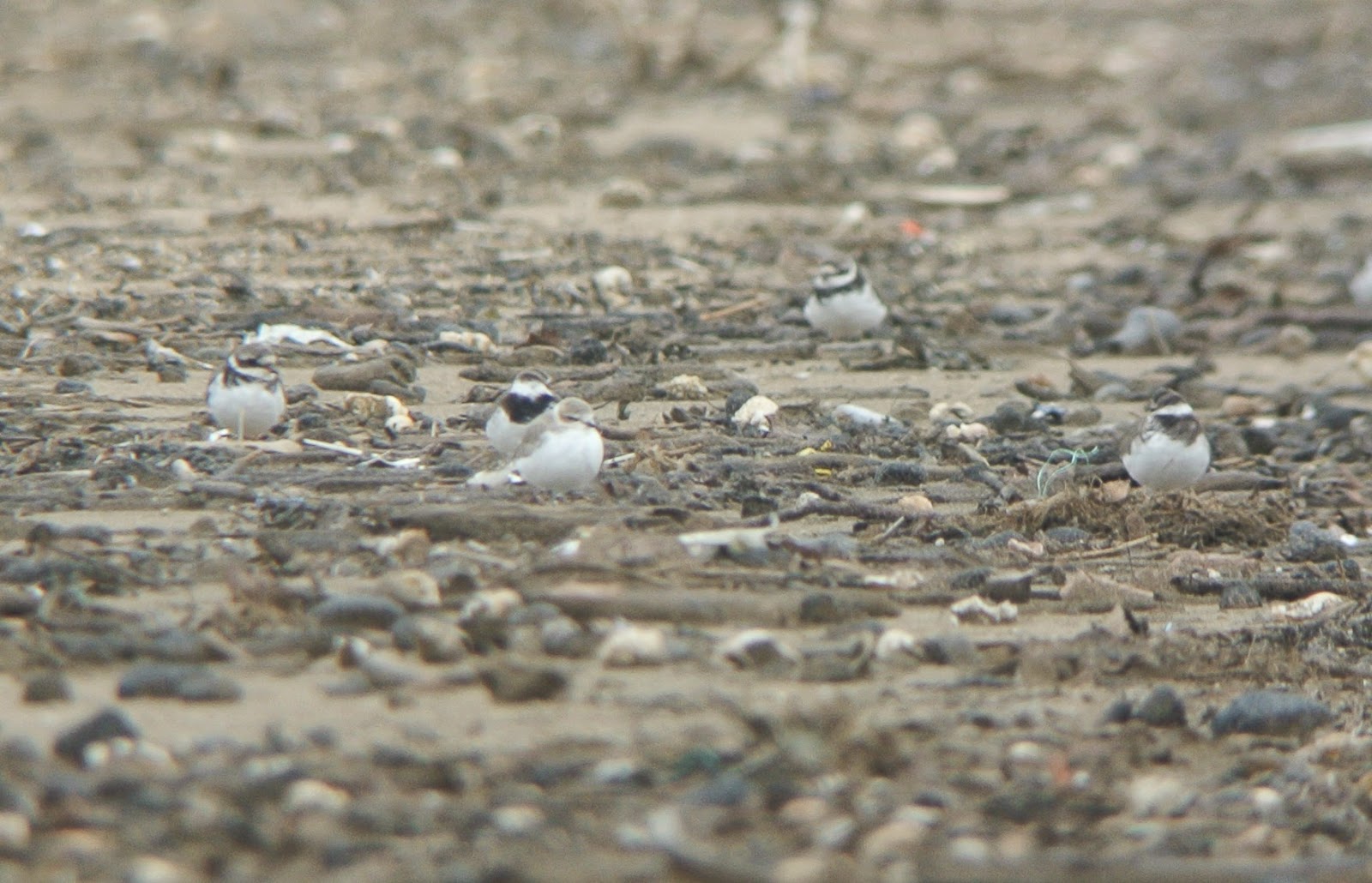I managed to get a few days off this year in between Christmas and New Year, and so when a possible THAYER'S GULL was found in West Yorks, it fitted in nicely with visiting the wintering BLYTH'S PIPIT near to Pugneys CP.
I arrived at Mirfield just after 08:00hrs, but it took quite a while to suss the area out and for all the birders to get together. We had an Iceland Gull fly over, but the flock of large gulls never really settled, and when they did they were out of view on warehouse roofs. Eventually they circled and all flew off.
The Blyth's Pipit was only 25 minutes away so I headed over. I stood for an hour waiting for something to happen and then it did. One of the locals very kindly walked through the area, and out popped the Blyth's Pipit. A brief flight along with a nice call and it landed on the other side of the road in a culvert...with short grass. This allowed everyone to get a decent view and the cameras were clicking away.
Blyth's Pipit near to Wakefield, West Yorks
This is the grass where it showed so well
This is where it hides until it's organised flushed out.
Satisfied with my views, I headed over to Pugney's hoping that the possible Thayer's was going to roost again. I told the posh bloke from Bedfordshire standing next to me at 14:30hrs that the roost wasn't going to form, as there were only about ten large gulls present. By 15:30hrs it wasn't quite at Chasewater levels, in fact there were only about 50 gulls present. Having done a roost before, I just had that gut feeling. There was no sign of the Thayers in a much reduce sized roost was the official line. I stood for nearly two hours on a frozen bank, and I have to admit, I gave up before it was dark as I was just absolutely frozen. Heaters on full all the way back thawed me out nicely.
And so that's it for 2014. No need to review the year as you can read all about it on my blog. And so 2015 will begin in a few days time. And what do we expect next year from us? CJW hopefully will reach a listing milestone and finally get to join the @NGBirders 200 Club. BUBO says he's about 12 short, so maybe by the second weekend in January he should get there. He also is celebrating his 60th birthday next year. A celebration trip is already being planned. Fingers crossed and Staffordshire birding will kick into life again soon. It's been quite a quiet spell or even quiet a quite spell recently, but we'll keep plodding on looking for that big one. Maybe next year we'll do a Barrymore and strike it lucky and find a big one.
Big thanks this year goes to the other three Clayheads who had to drive me around during January and February when I was unable to drive. Much appreciated and hope you all enjoyed finally being able to walk faster than me for a short time.
Apologies now.
First to PJ. PJ offered to take me up to Tittesworth to see the Lesser Scaup. It was a bird I wanted to see as I'd been putting the news out daily whilst in hospital. So what better way to announce my return to birding than a trip up the moors. However it was only five days after I'd come out of intensive care (true fact), and maybe looking back it was a bit too soon. But I managed it, we saw the bird and PJ dropped me off outside my house. The last thing I said to him as I got out of the car was "Watch the balls". (We have low lying street furniture in the street and if you forget about them and drive forward, it hurts the car a bit). Poor old PJ did me a huge favour, took me out, then wrote off his car outside my house.
Secondly to CJW who had to watch as I walked/stood on the slippiest bank in the world while watching the Gloucs/Wiltshire Red-flanked Bluetail. It was only four weeks after surgery and he was slightly worried as to what happened if I fell over. (I would have split open again Chris and made a mess of your car)
Stunning days indeed. The bank was incredibly slippy so we stood on it.
And for my bird of the year?
Take your pick
See you all in 2015.


















































